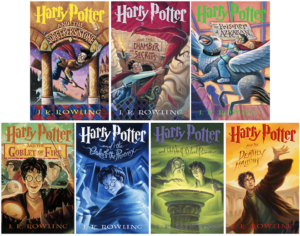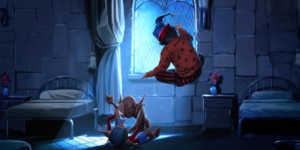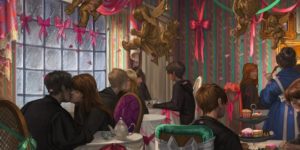Three Sets of Canon – Part 1: Book Canon
With Harry Potter and the Cursed Child recently published in script form and giving us new information on the wizarding world, the age-old question comes out again: Is this canon? Everyone seems to have their own opinion, so I thought, “Why not throw in my two cents?” The Potterverse has certainly come a long way in the last 19 years since Sorcerer’s Stone was first published. We have the original series, companion books, two movie franchises, Pottermore, and now, a stage play. Let us not forget the numerous parodies, adaptations, and fan fictions made by fans for us to enjoy. But where does it all fit? Is it all canonical? Where do we as fans need to draw a line? I have my own opinion of how we should view J.K. Rowling’s world.
My answer, as well as J.K Rowling’s, to if Cursed Child is canon is yes. Even though she did not write the play herself, she did collaborate and approve the story. But at the same time, this does not mean it has to line up with the canon of the Harry Potter books. What I’m saying is that in we now have three continual lines of canon in the Harry Potter universe. We have book canon, movie canon, and theater canon, with each line of canon existing in its own realities in each art medium. The logic of each universe doesn’t line up with each other, but each makes a coherent story by itself, and with all relying on the original source, the books.
1: Book Canon

Book canon is the easiest to have everyone agree on. The first seven Harry Potter books started it all and came straight from J.K Rowling herself. Every detail of these books is considered canon. However, there are many parts of the books that were not adapted into other mediums and therefore, will always remain strictly book canon. A list of strictly book canon includes:

- Veron Dursley’s day on November 1, 1981
- The Marauders’ backstory in Prisoner of Azkaban
- Weasley is our King
- SPEW
- Sirus attacking Ron in his bed in Prisoner of Azkaban
- The complexity of the Department of Mysteries
- Harry’s 17th birthday party
- Dumbledore’s funeral
- Cho and Harry’s disaster date
- Rita Skeeter is an Animagus
- Harry giving his Triwizard earnings to Fred and George
- Winky the house-elf, and her involvement with Barty Crouch, Jr.
- Dumbledore sending Petunia a Howler in Half-Blood Prince
- etc…

These things are all accepted as Harry Potter canon despite the fact they are never mentioned in the movies, and this is because they don’t fit in that timeline. Is this where book canon ends? Not everyone seems to agree on this.
The second layer of this canon is what J.K Rowling has written, said, or published about the Harry Potter series outside of the seven books. This includes Pottermore stories, companion novels (The Tales of Beetle the Bard/Quidditch Through the Ages/Fantastic Beasts and Where to Find Them), J.K. Rowling’s website, and things she has said or tweeted (James Potter was a Chaser/Dumbledore is gay/Teddy Lupin is in Hufflepuff). Many people feel that all of these extras should not be considered part of book canon because they are not published in the original series. J.K Rowling is the creator of the wizarding world, though, and therefore has the last word on any piece of information in that universe. She has stated that she already knew most of this information prior to her finishing the series, but the information had no point in the books because it was not part of Harry’s journey.
For example, there is a story on Pottermore about Minerva McGonagall’s past, which is a very interesting insight into her character but would not have made sense for Harry to have known in his school days. I will include these extra works as book canon. They are pieces that officially fill the gaps the book left behind, and I personally kept them in mind when rereading the original series.
This line of canon introduced us into the wizarding world. J.K Rowling’s writings laid down the rules, established the characters, and became instant classics that others soon wanted to adapt. The book canon began Harry Potter, and now we have the means of seeing the stories altered into new lines of canon.
Be sure to check out Parts 2 and 3 where I discuss movie and theater canon.

